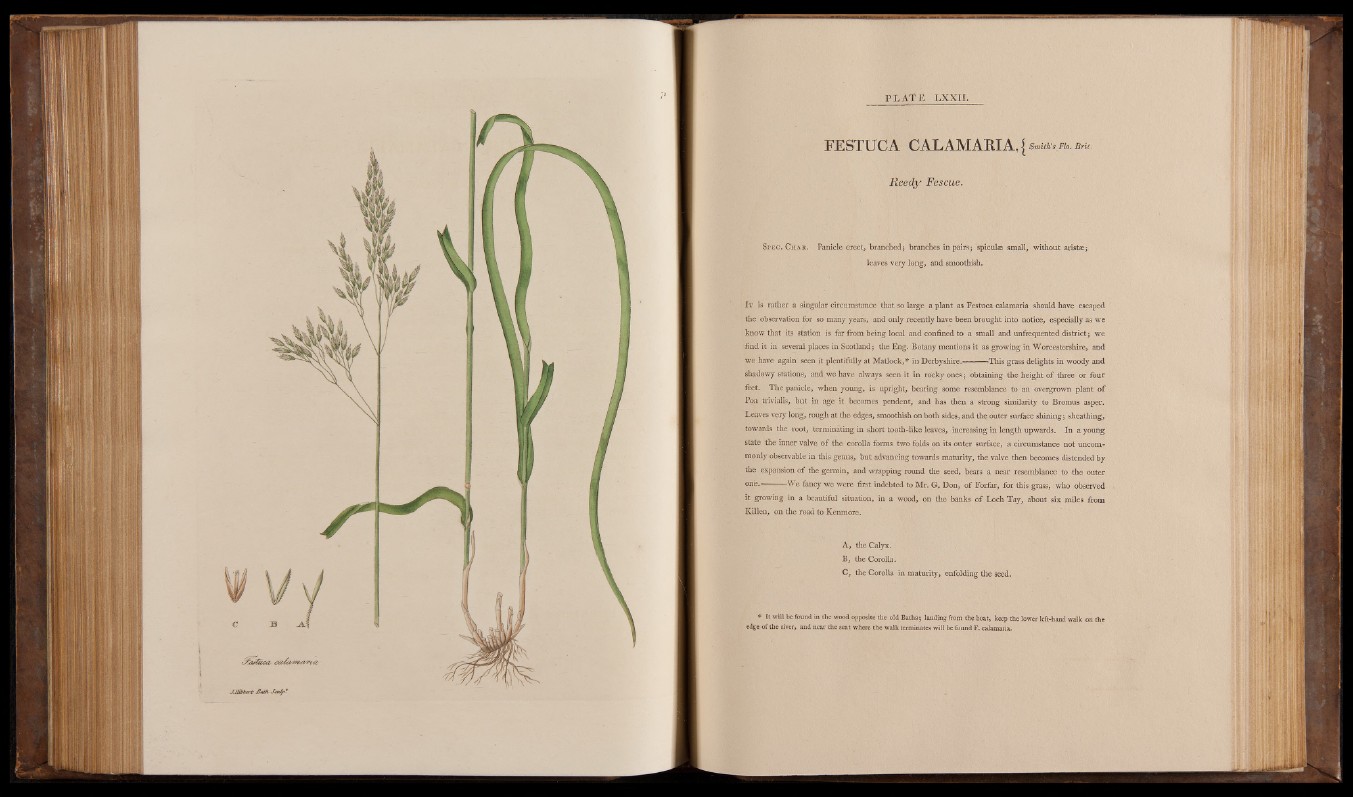
FESTUCA CAL AM ARIA. { Smith's Flo. Brit.
Reedy Fescue.
Sp e c . C h a r . Panicle erect, branched; branches in pairs; spiculae small, without aristae;
leaves very long, and smoothish.
I t is rather a singular circumstance that so large a plant as Festuca calamaria should have escaped
the observation for so many years, and only recently have been brought into notice, especially as we
know that its station is far from being local and confined to a small and unfrequented district; we
find it in several places in Scotland; the Eng. Botany mentions it as growing in Worcestershire, and
we have again seen it plentifully at Matlock,* in Derbyshire.--------- This grass delights in woody and
shadowy stations, and we have always seen it in rocky ones; obtaining the height of three or four
feet. The panicle, when young, is upright, bearing some resemblance to an overgrown plant of
Poa trivialis, but in age it becomes pendent, and has then a strong similarity to Bromus asper.
Leaves very long, rough at the edges, smoothish on both sides, and the outer surface shining; sheathing,
towards the root, terminating in short tooth-like leaves, increasing in length upwards. In a young
state the inner valve of the corolla forms two folds on its outer surface, a circumstance not uncommonly
observable in this genus, but advancing towards maturity, the valve then becomes distended by
the expansion of the germin, and wrapping round the seed, bears a near resemblance to the outer
one. We fancy we were first indebted to Mr. G. Don, of Forfar, for this grass, who observed
it growing in a beautiful situation, in a wood, on the banks o f Loch Tay, about six miles from
Killen, on the road to Kenmore.
A, the Calyx.
B, the Corolla.
C, the Corolla in maturity, enfolding the seed.
* It will be found in the wood opposite the old Baths; landing from the boat, keep the lower left-hand walk on the
edge of the river, and near the seat where the walk terminates will be found F. calamaria.